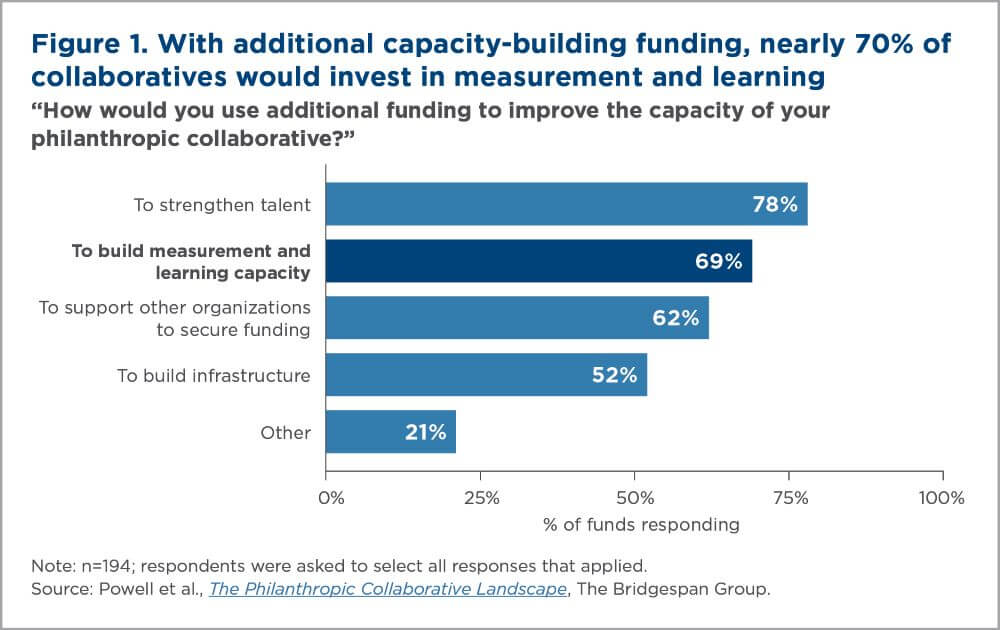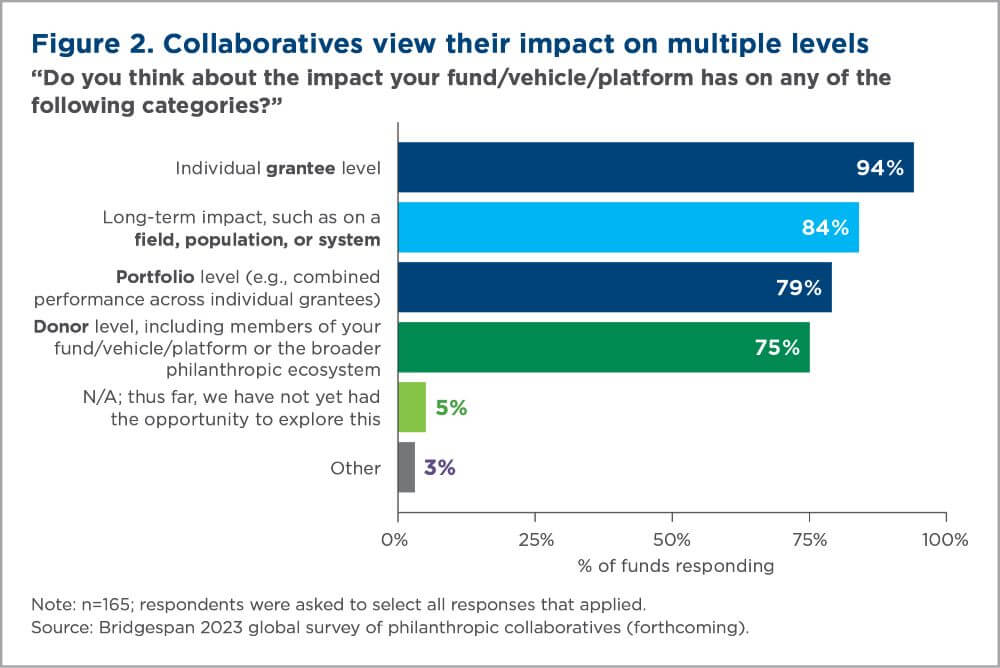Executive Summary
Philanthropic collaboratives are burgeoning: they currently deploy billions of dollars per year for social change. In Bridgespan Group surveys conducted between 2021 and 2023, collaboratives reported collectively directing $4 billion to $7 billion of funding per year to a variety of grantees.1
Related Content
Download a PDF of this full article.Learn more about The Philanthropic Collaborative Landscape
Nearly 70 percent of the collaboratives that responded to our 2022 survey cite building measurement and learning capabilities as an especially important way to improve their organizational capacity. Measurement and learning can help collaboratives assess progress toward their goals, understand challenges and correct course, better support grantees and communities, more effectively incorporate equity goals, and mobilize philanthropic resources for the issues they are tackling.

But measurement can also go astray—overburdening grantees, eating up grantee resources, focusing on compliance rather than learning, or privileging the concerns of donors over those of grantees and communities. This can be especially challenging when an organization’s goals are not easily captured by traditional approaches, such as counting the number of people served.
This article shines a light on promising practices for how philanthropic collaboratives can effectively measure, evaluate, and learn in the pursuit of greater impact.
It is based on two dozen interviews with collaborative leaders (plus informal conversations with dozens more), donors, grantees, and measurement experts; our survey research over the past three years including nearly 280 philanthropic collaboratives; a review of public reports from over 50 collaboratives; and a review of philanthropy measurement literature. For this research, we defined collaboratives as entities that either pool or channel resources from multiple donors to nonprofits.
Collaboratives are similar to philanthropies in how they measure and learn. They have the opportunity to look across a portfolio of grantees, they can engage constituents and communities in measurement activities, and many tackle the challenge of measuring systems change and other bold social change efforts.
But collaboratives also operate in a unique context—sitting at the intersection of donors, grantees, and systems. And because collaboratives must raise funds both for their own operations and for the funding they grant to nonprofits and NGOs, they must demonstrate the value of their intermediary position in a way that is rarely required of foundations and individual givers. The most effective measurement and learning approach will build off the collaborative’s strategy, reflect its multiplicity of stakeholders, and address the ultimate test—what is happening in the world as a result of the collaborative’s work.
How can collaboratives navigate this complexity? One core principle cuts across all measurement work, whether philanthropic, nonprofit, or for-profit: start with strategy.
While grantmaking is often core to a collaborative’s strategy, the impact is ideally greater than the sum of its grants and grantees. Collaboratives will therefore seek to understand their impact on both grantees and donors. And for many, their measurement approach will also need to consider the system or field level, according to forthcoming Bridgespan research. As the figure below illustrates, collaboratives most often think about their impact on an individual grantee level. Fewer focus on portfolio-level impact. Although they view their impact on multiple levels, collaboratives around the world emphasize the need for understanding best practices for how to communicate impact within and across these categories.

This article is organized around these three levels of impact—grantees, systems or fields, and donors—and shares practical tips for leaders of collaboratives who are seeking to better understand, measure, and communicate the impact of their work. We believe that some collaboratives are leading on promising practices that could benefit the entire philanthropic sector’s measurement and learning practices—and are excited to share some of these practices.








